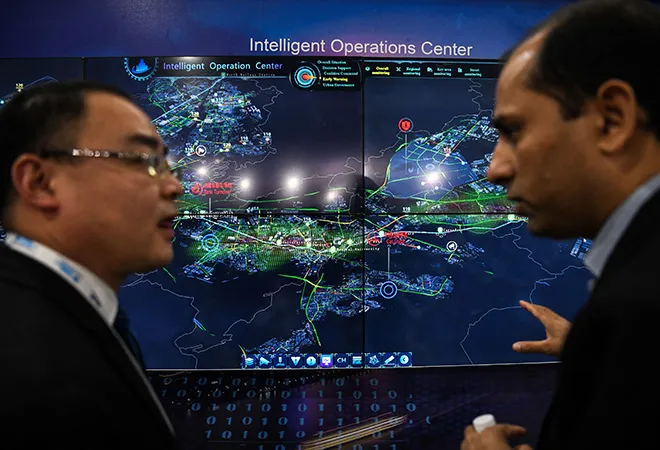-
CENTRES
Progammes & Centres
Location
After last summer’s clashes with China, New Delhi may finally be ready to leave ambiguity behind—and side with the West.

The effect is the potential splintering of global cyberspace and technology into two distinct spheres of influence. Policy experts even predict a “digital iron curtain” falling across global technology and governance as some countries opt to go with the United States and others—particularly low- and middle-income countries—pick more cost-effective Chinese options. For a while, it looked as if India, whose telecom industry is plagued by financial trouble and already has partnerships with Huawei, might well go with China. However, the Galwan Valley clash between China and India in June 2020 proved to be a decisive turning point for the Indian government. India’s immediate response to the skirmishes was to ban more than 260 Chinese apps, purportedly to ensure the safety, security, and sovereignty of Indian cyberspace. While benefits of the move for India’s technological security have been questioned, the measure was a clear political signal. At the same time, India has invested more in its technological partnerships with Australia, the European Union, and the United States. The more New Delhi works with those powers, the more momentum there will be pushing their convergence on major technologies. For example, the recent Quad leaders’ summit in March, saw the decision to launch a critical- and emerging-technology working group to facilitate cooperation on international standards and innovative technologies of the future. The launch of the Quad Tech Network is another initiative to promote research and public dialogue on cyber- and critical-technology issues. Ever since the onset of Chinese aggression on India’s borders, it has become increasingly clear that India would lean toward keeping Huawei out of its 5G networks. This is a departure from New Delhi’s previous position; as the second-biggest market by number of phone users, India was keen on maintaining ambiguity as a bargaining chip. Now, the Indian government appears ready to be clear and decisive. Given the size of the Indian market, this move has the potential to shape the choices of other fence-sitters.Unease with Huawei in particular dovetailed into larger geopolitical and strategic concerns associated with the ongoing technological cold war between the United States and China. Both countries—through policies, statements, and actions—have worked to compel third parties to either choose Huawei and risk ties with the United States or ban Huawei and invite repercussions from China.
Technological developments built on 5G networks will form the backbone of India’s critical information infrastructure and will host a steady stream of sensitive data and information. Although India’s final answer to the 5G question was prompted by security concerns, its burgeoning technology partnerships with Western countries have also played a role. As India’s ties with China undergo a dramatic shift because of the pressures emanating from the border tensions, India’s tilt toward the West is becoming more pronounced, more generally in its strategic orientation and specifically as part of the global 5G competition.Ever since the onset of Chinese aggression on India’s borders, it has become increasingly clear that India would lean toward keeping Huawei out of its 5G networks
The views expressed above belong to the author(s). ORF research and analyses now available on Telegram! Click here to access our curated content — blogs, longforms and interviews.

Professor Harsh V. Pant is Vice President – Studies and Foreign Policy at Observer Research Foundation, New Delhi. He is a Professor of International Relations ...
Read More +